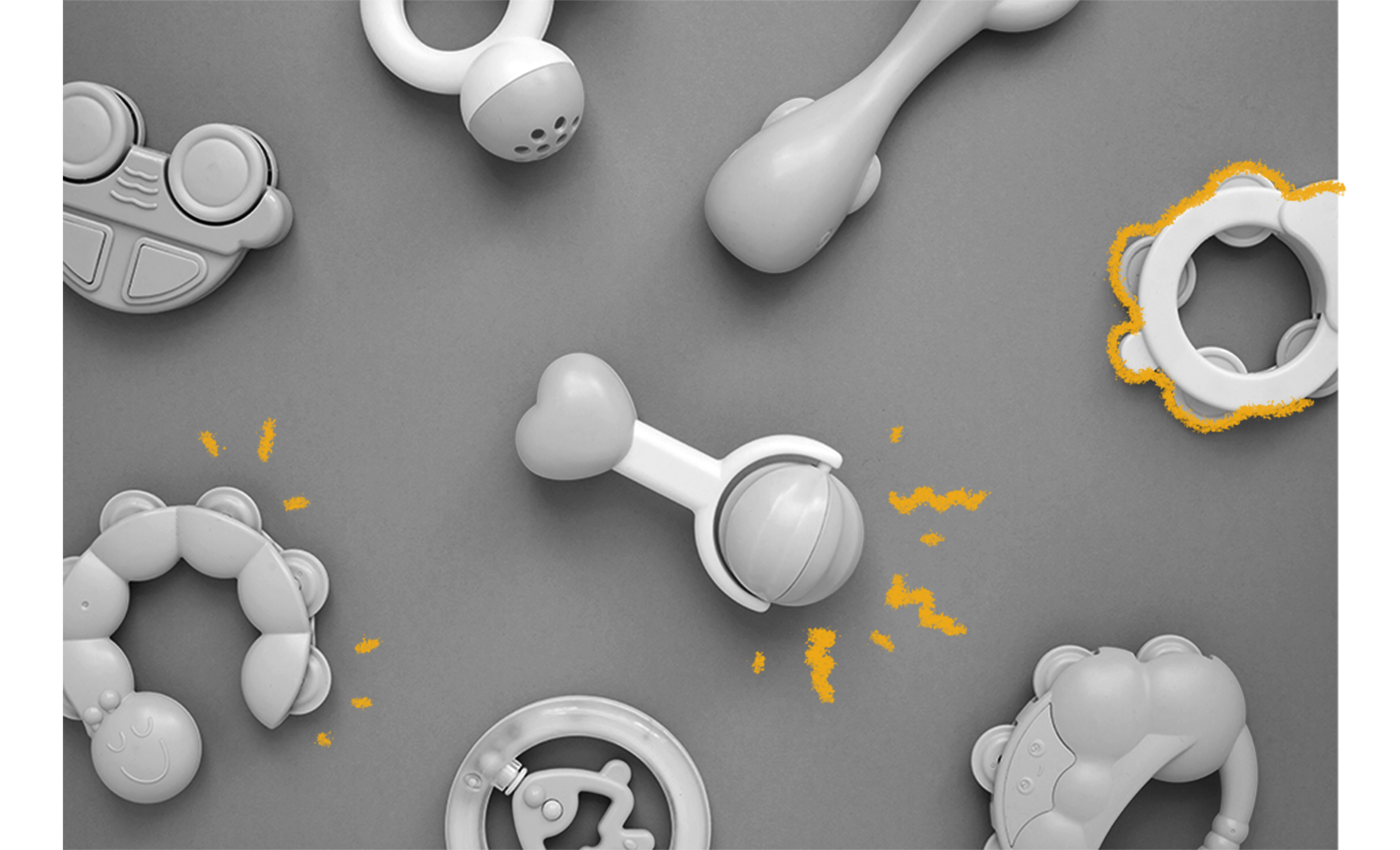Rattles are a surprisingly ancient invention. One of the earliest rattles ever found dates all the way back to the early Iron Age of Lusatian culture. Many similar examples have been found at Greco-Roman archeological sites. Early rattles often featured coral handles, partially for practical reasons and partially as a holdover from the Roman practice of adorning cribs with coral in order to guard children against witchcraft. Later, silver rattles became popular and remained so for centuries. In fact, up until the 19th century, most rattles were made of silver and featured small bells and a whistle for entertaining or soothing babies. Georgian silver rattles were particularly small and delicate and were often adorned with floral and foliate designs. In the late 19th and early 20th centuries, mother-of-pearl and ivory handles replaced silver as the material of choice and a teething ring replaced the stick handle. Bells began to decline in popularity around this time, too, and they were often replaced by an economical alternative — dried peas in the hollow body of the rattle. Novelty rattles also gained popularity around this time. For many centuries, silver rattles have been traditional gifts for Christenings and other important ceremonies in a baby’s young life. While these gifts are sometimes still given, they are usually just ceremonial, and most rattles used today are made out of baby-safe materials such as special plastics.

Your go-to guide for weird history facts
Subscribe to the FREE daily email that makes learning about history fun.


